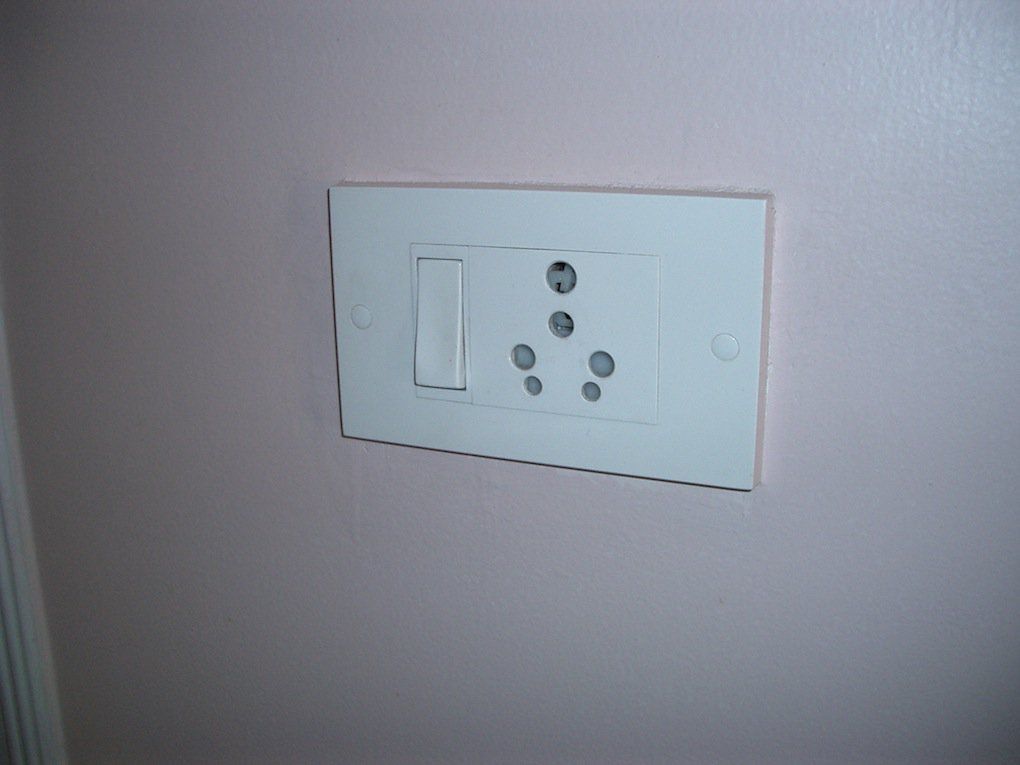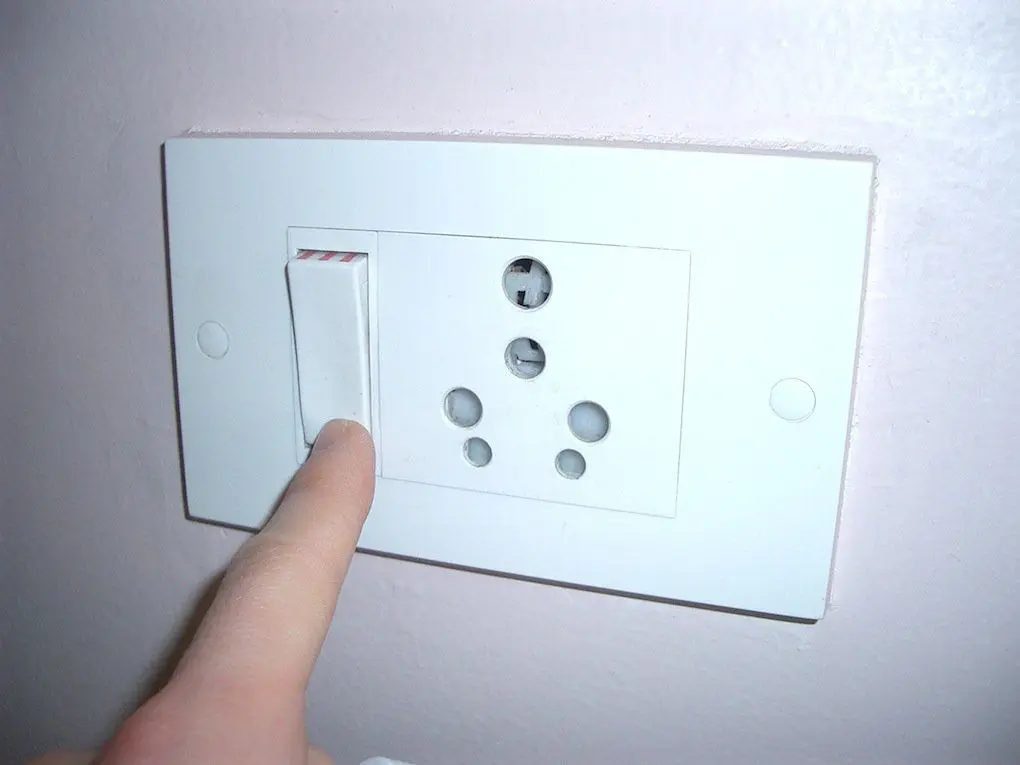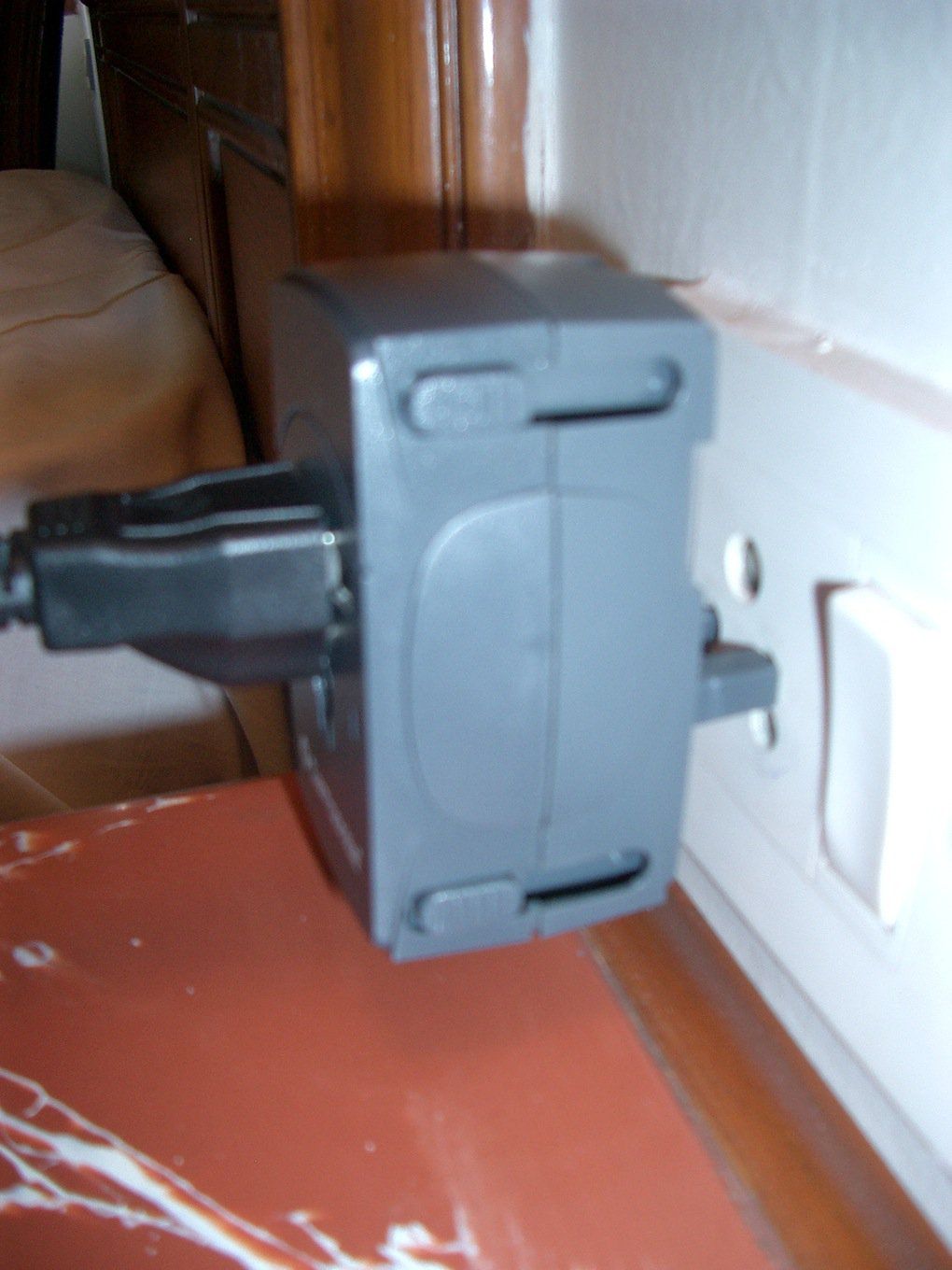 The electric outlets in India can look baffling but are rather simple once you know which hole is what. You can even take along a simple European adapter (this trick works for Americans as well) and save the expense and space of a European/US to Indian outlet adapter.
The electric outlets in India can look baffling but are rather simple once you know which hole is what. You can even take along a simple European adapter (this trick works for Americans as well) and save the expense and space of a European/US to Indian outlet adapter.
The three things you’ll need are a plastic pen, plug adapter, and a voltage converter (for Americans).
One of the first things you’ll notice is the two vertical holes (locks) on top and the 4 horizontal buttons (electric outlets) just below. The switch to the left is a safety and serves to cut the power on and off to the outlet.
First Turn Off The Power
The switch on the left of the outlet turns power on and off. Turn the power off by flicking the switch down, so that the top of the switch is showing three red bars.

Use The Plastic Pen To Release The Outlet Saftey
Although you’ve turned power off to the outlet, don’t think about using anything other than a plastic pen. Use the plastic pen and insert it in the lower of the two vertical holes. This will release the locks on the holes below, allowing you to plug in your European adapter into the lower of the two horizontal holes. (Don’t worry, they’re the only two holes the adapter will fit into).

Remove The Pen and Switch The Power Back On – You’re Now Ready To Go
 Now you’ll be able to plug in all of your European gadgets and appliances. Americans will need a voltage converter however. You’re best bet is to bring an all-in-one converter that has European, UK, and Australian adapters. Insert the European adapter into the Indian outlet, then plug in your US gadgets.
Now you’ll be able to plug in all of your European gadgets and appliances. Americans will need a voltage converter however. You’re best bet is to bring an all-in-one converter that has European, UK, and Australian adapters. Insert the European adapter into the Indian outlet, then plug in your US gadgets.
A Few Things To Keep In Mind
Even if you are using a European plug, it may still be a good idea to bring a voltage adapter to protect your electronic devices. Laptops already come built-in with voltage converters (the thick brick on the cable) as well as most cell phone chargers, electric razors, and anything else with a thick brick on the cord itself.












In India, the switches work the other way round. You actually have turned it on and have then inserted your pen.
Hmm, this was in India, but perhaps my particular location?
A few things:
1.U seem to have switched the plug ON.
2.That is not a typical Indian wall socket but a TypeM/D hybrid.The larger plug in India carries a 16A circuit which is used to connect ACs,Geysers,washing machines etc and the smaller carries a 6A circuit which is used for everything else that is rated @ 1300W or below.
3.Most Indian 6A plugs are either stand alone or Type C/D hybrids arranged in a similar manner but with 5 holes the two smaller ones being compatible with europlugs which is common throughout Europe.
So sure it was off when I took the photos but then again could have just gotten confused. My mistake but the concept for getting this particular type to work is the same.
European plugs have holes / strips for earthing connection CEE 7/4, CEE 7/5, CEE 7/7 standards.
These are dangerous to use in India as user will not have earthing protection. All adaptors and sockets available in India does not connect to earthing strip or holes of these plugs.
Why it’s best to use a voltage adapter, though if you’re in a crunch and need a quick, temporary solution…
The switch is turned on with the three red lines